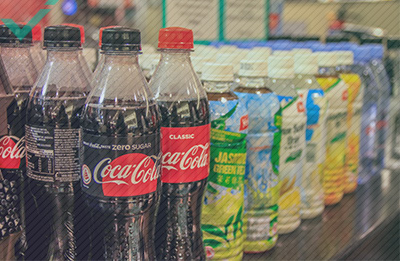When we think of shopping holidays, we likely think of Black Friday and Cyber Monday (at least in the US, Europe and other parts of the Western world). However, there are many other international shopping holidays out there, and some generate even more sales than Black Friday and Cyber Monday combined. Read on for a look at the 8 biggest shopping holidays from around the globe. Could you name them all?
THE TOP 8 BIGGEST SHOPPING HOLIDAYS AROUND THE WORLD
1: BLACK FRIDAY
Black Friday is without a doubt one of the biggest and most well-known shopping holidays of the year.
In the US, Thanksgiving (another major shopping holiday we’ll discuss later) always falls on a Thursday. In much the same way, Black Friday is celebrated each year, falling on the day after Thanksgiving (the fourth Thursday of November). Since the 1950s, Black Friday has been used as a marketing stunt to mark the unofficial start of the Christmas shopping season. But since 2003, it’s officially become the busiest shopping day of the year in the US. And like many American consumer traditions, Black Friday has made its way abroad as well, now taking place in many other countries across Asia, Europe, and both North and South America. While it’s not as big in other parts of world as it is in the US, Black Friday is becoming more popular every year. In Europe, for example, the holiday boasted a whopping 124% growth between 2010 and 2014. Black Friday has also become incredibly popular in Brazil, where it often causes chaos (much like in The States). However, the holiday came under scrutiny recently, with some retailers inflating prices before discounting them to give the illusion of reduced prices.

2: CYBER MONDAY
Coming in at a close second place as one of the biggest and best-known shopping holidays across the globe is Cyber Monday.The “holiday” has existed officially since 2005, and traditionally falls on the Monday after Thanksgiving in the US. It was originally used to encourage online shopping, offering consumers discounts for buying products over the web rather than in a physical store. And the idea worked. Last year, Adobe tracked that US consumers had spent over $840 million USD per diem by the morning of Cyber Monday alone. On Saturday and Sunday, US consumers spent over $15 billion USD (over 10% more than the year before), according to the same source. And it’s not hard to see why: For many consumers, the chaos and violent competition that Black Friday is infamous for is off-putting. Cyber Monday gives these consumers the chance to still take advantage of deals with all the comforts of online shopping. Like Black Friday, Cyber Monday quickly caught on around the world. Today, it’s a big shopping holiday in the UK, Europe, Brazil, Argentina, and many other countries. In fact, the holiday is especially big in Latin American countries.
3: DIWALI
While it may not be as famous as the first two shopping holidays we mentioned, Diwali is a big deal. Diwali is a traditional Hindu light festival celebrated in India, Fiji, Malaysia, Sri Lanka, and many other countries. The date of Diwali changes every year, but it generally falls between October and November. It traditionally signifies the triumph of light over darkness, but has since been turned into a huge commercial holiday, especially in India and Nepal, where it is the largest shopping holiday of the year. During Diwali, Hindus buy festive lights to decorate their houses, as well as gifts for themselves and family and friends. These can include clothes, electronics (especially mobile phones), appliances and utensils, and even luxury items like cars and jewellery. Cashkaro.com, India’s leading cashback and coupons site, surveyed over 1,000 customers to get an idea of Diwali shopping trends in India. The company found that people spend on average between RS 10,000-25,000 (roughly $150-400 USD) during Diwali. Some users, however, claim to spend over RS 50,000 ($780 USD) on the holiday. The firm also noted that Diwali shoppers are heading online, where they claim to get better prices and a more convenient shopping experience.
4: SINGLES’ DAY (GUANGGUN JIE)
While Black Friday and Cyber Monday are probably the best known international shopping holidays, they have nothing on China’s Guanggun Jie or “Singles’ Day.” Singles’ Day, designed to celebrate China’s most prized demographic (young singles), was invented by a group of college kids in the ‘90s. But in the late-2000s, the holiday got taken over by Alibaba Group (a Chinese e-commerce giant), who built it into the largest shopping holiday in the world. Here’s how it stacks up to some US shopping holidays, for example: Last year, Singles’ Day in China was reported to have generated over $25 billion USD in sales. Meanwhile, the combined sales from Thanksgiving and Black Friday in the US last year generated only $4.7 billion USD.
5: THANKSGIVING
Thanksgiving is one of the biggest holidays in the US. And while we mainly think of Black Friday and Cyber Monday as the biggest shopping dates, Thanksgiving definitely deserves a mention too. Although Black Friday was traditionally thought of as the start of the holiday shopping season, retailers don’t really play by those rules anymore. In fact, many major retailers in the US (like Walmart, Target, and Best Buy, for example) will open their doors on Thanksgiving to get a head start on the massive shopping weekend ahead. Some consumers actually find that big department stores have better prices on Thanksgiving than on Black Friday or Cyber Monday. And that’s definitely enough to encourage shoppers. In 2017, Thanksgiving generated $1.5 billion USD in online revenue alone.

6: BOXING DAY
Boxing Day is easily one of the largest shopping holidays in Britain and other ex-British countries like Australia. It is celebrated on the day after Christmas and, much like Black Friday, is known for its big specials on consumer goods. Therefore, whereas Black Friday is meant to mark the beginning of the Christmas shopping period, Boxing Day is meant to mark the end. The idea behind the holiday is simple: After December 25th, retailers wanting to get rid of excess Christmas stock before the end of the year sell it at discount rates. For a long time, Boxing Day was the main shopping incentive in ex-British countries like Canada, for example. Today, however, Boxing Day deals are similar to those of Black Friday, and both Black Friday and Cyber Monday are becoming increasingly popular in many of these countries.
7: EL BUEN FIN
El Buen Fin (literally “The Good Ending”) marks the beginning of the holiday shopping season in Mexico. It is an annual event that takes place on the weekend before Dia De La Revolucion, which marks the beginning of the Mexican Revolution. In 2017, the four-day shopping spree was expected to be huge, estimated to draw in over 100 billion pesos (roughly $5.5 billion USD). Like Black Friday in the US, El Buen Fin offers consumers all kinds of deals on everything from clothing to electronics, as well as special credit offers and packaged deals.
8: CHINESE NEW YEAR
Chinese New Year is a major Chinese holiday, estimated to be celebrated by over 1 billion people around the globe. While it officially marks the beginning of the new year according to the Chinese lunar calendar, it has become a huge commercial holiday too. Today, buying gifts, decorations, and food has become an important aspect of the holiday. While not as big as Single’s Day, Chinese New Year still generates a lot of sales: Hong Kong Means Business, for example, reported that in 2016, Hangzhou, the capital of Zhejiang Province, took in RMB 754 billion ($118 billion USD) over the first six days of the festival.
TAKE ADVANTAGE OF THESE GLOBAL HOLIDAYS
Are you ready to take advantage of these global shopping holidays? Contact us today to find out more about our translation services and start reaching a global audience.


